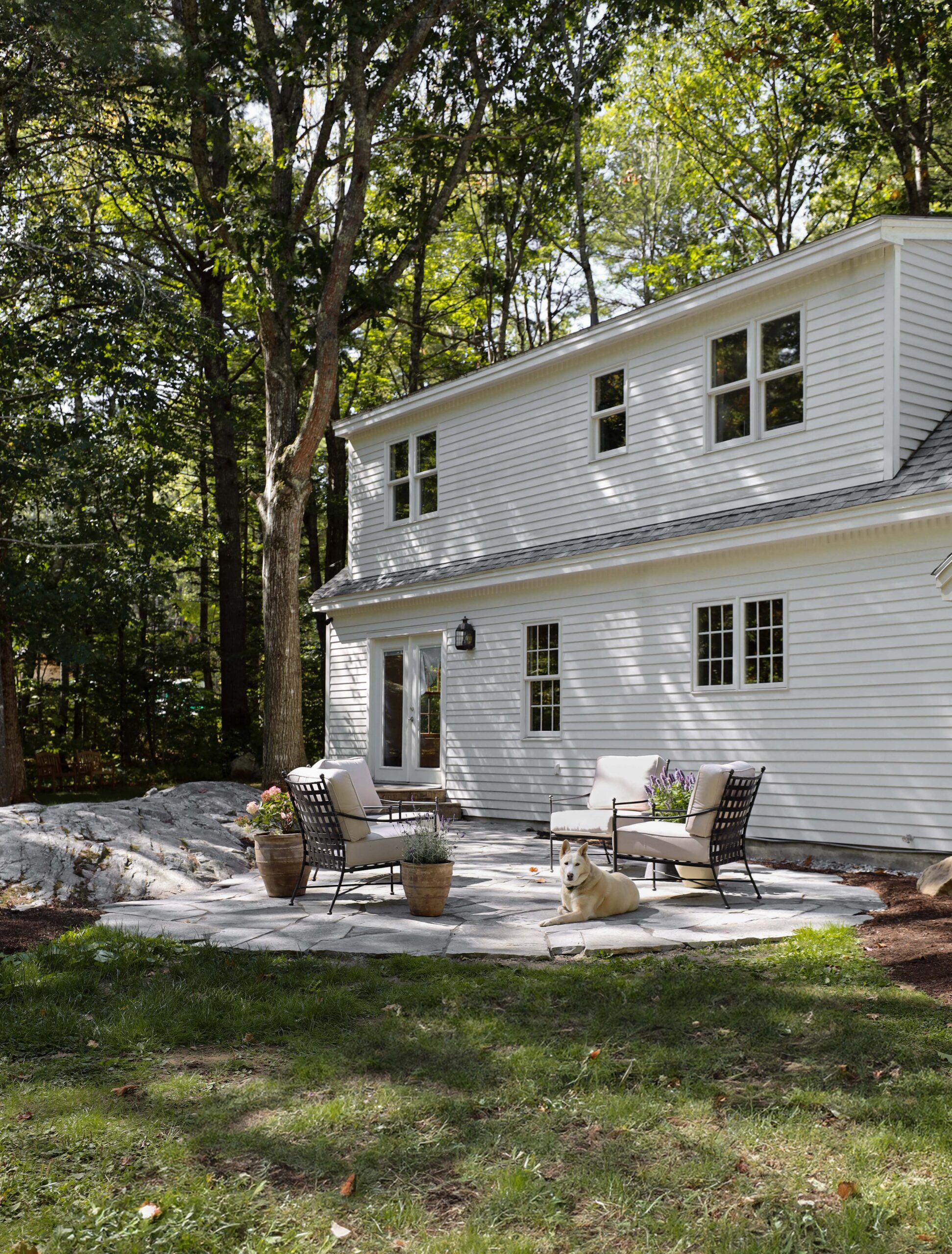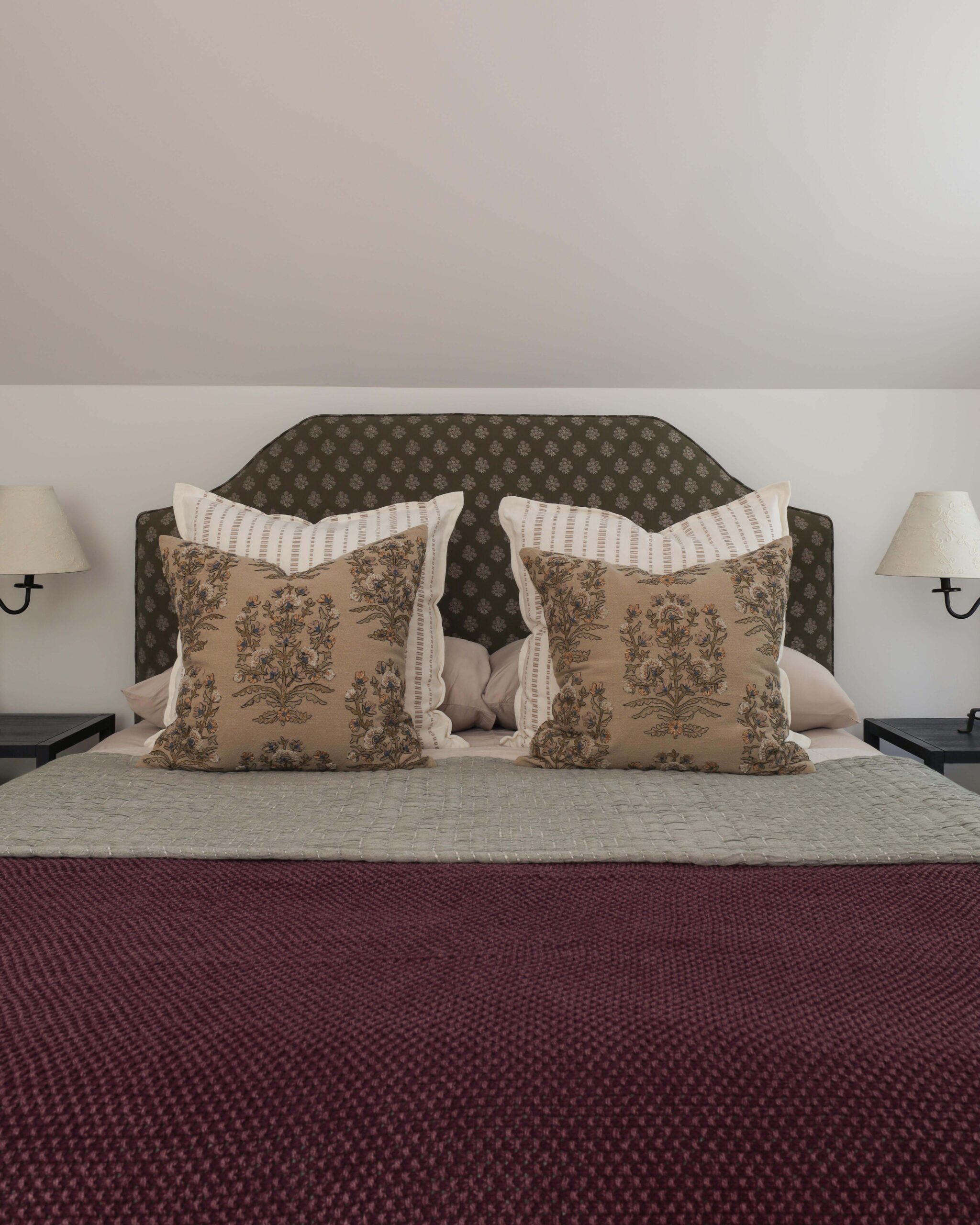
When it comes to natural, timeless countertop materials, solid wood and butcher block remain popular choices for their warmth, character, and versatility. The rich grain patterns of walnut and the classic utility of maple butcher block infuse a sense of craftsmanship and history into the kitchen. But like any material, wood has its trade-offs. In this article, we’ll walk through the pros and cons of solid wood or butcher block countertops, from aesthetic appeal and affordability to vulnerability to moisture and wear. We’ll also cover what it takes to care for them properly so you can decide if wood is a good fit for your lifestyle and kitchen habits.
This article contains affiliate links.


Wood Countertop Specs
BUTCHER BLOCK VS WIDE PLANK VS VENEER: There are several types of wood countertops, each offering a different look, level of durability, and maintenance requirements.
- Butcher Block: Butcher block counters are made of thin strips of solid wood glued together. While butcher block can be made of any wood variety, the most common species are birch, beech, maple, walnut, and acacia. Butcher block is the most prevalent form of wood countertops today.
- Wide Plank: Wide plank wood countertops consist of fewer boards with wider widths. The edges are joined together, resulting in a look that resembles a tabletop. Generally, this style of countertop needs to be custom-made.
- Veneer or Laminate: While the previous two options are made of solid wood, veneer and laminate countertops are not. The interior is particleboard with a thin layer of either laminate (a plastic sheet made to look like wood) or veneer (real wood shaved down to a paper-thin thickness) glued on top.
COLOR: The beauty of wood countertops is that you get to pick the stain color that best suits your kitchen. Of course, you can choose to leave the wood unstained, showing its natural coloring. Or you can apply a medium-dark stain color that enhances the wood grains.
SEALING: Sealing wood countertops in a kitchen is necessary to preserve its beauty and finish. Raw wood absorbs moisture, which in turn creates a slew of issues such as water spots, warping, and mold. There are two ways to protect your wood countertops, one is more effective than the other:
- Conditioning: If you want to use your wide plank wood or butcher block countertop as a cutting board and food prep surface, you can apply beeswax, food-safe mineral oil, or a combination of the two. This will keep the wood from drying out and cracking. Frequent re-application is needed to preserve the wood – as often as once a week to once a month. Keep in mind, beeswax and food-safe mineral oil are not sealers. They will not protect the wood from water, stains, and bacteria, and they are not recommended for countertops near a sink or stove. Additionally, do not cut raw meat, poultry, or fish on conditioned wood.
- Sealing: Oil-based sealers provide a strong, hard finish that lock out moisture and stains. While water-based sealants are available, generally they aren’t as durable as oil-based ones. There are many recommended sealants including Polyurethane, Waterlox, and Rubio Monocoat. Keep in mind, these sealants are not food-safe, but fine for food contact after curing. Cutting on these surfaces is not safe. Due to the hard coating that sealers provide, this is the preferred method to preserve wood countertops.
SCRATCHES & DENTS: The harder the wood species, the less frequently you will encounter scratches and dents in the wood. Common hardwood countertops include white oak, hard maple, ash, birch, and hickory. Softer woods such as pine, knotty alder, and even walnut can dent more easily. If you seal your wood countertops with a water-based sealer such as Polycrylic, you will encounter scratches on the finish itself.
STAINS: Wood is a porous material. Stains from water, oil, and food are inevitable if the wood is not properly sealed. For unfinished or conditioned wood, the tighter the grain and the denser the wood, the slower the absorption rate will be. For sealed wood, an oil-based sealer that is properly maintained will deter most liquids from absorbing and staining.
WEAR: Wear is to be expected with use. Unfinished and conditioned wood countertops will show wear the fastest since there is no protective barrier resisting water or stains. Sealed countertops will last longer with proper care, but with time, scratches, dents, and finish imperfections will appear. The finish will be the first to wear down, and if not repaired, the wood underneath will begin to show wear as well.
REPAIRS: Thankfully, solid wood can be repaired. Sanding the surface down to bare wood and re-sealing will make the wood countertops look nearly brand-new again. While this may be a relatively “easy” fix, it’s not without its downfalls. The worst of which is the dust that will come from sanding. That said, you can sand and re-finish your solid wood countertop as many times as needed. Start by power sanding the counter with 80 grit sandpaper until the finish (and stain) is fully removed. Then use 220 grit sandpaper to smooth out the surface and wipe off the dust with a dry cloth. It’s now ready for stain and a sealer.
HEAT RESISTANCE: Trivets are necessary to protect your wood countertops and the finish from burning and getting damaged. Do not place hot pots, pans, or even crockpots directly on the surface.
BACTERIA RESISTANCE: When it comes to cutting boards, it has long been said that wood harbors bacteria, but plastic is “safer”. So, microbiologists at the University of Wisconsin’s Food Research Institute performed a study to find ways to make wood cutting boards as sanitary as plastic cutting boards. They contaminated both wood and plastic boards with Salmonella, Listeria, and E. Coli. To their surprise, “99.9 percent of the bacteria died off within three minutes on the wooden boards, while none died on the plastic ones.” (Read the full study summary from 1993 here.)
That’s not to say wood countertops can’t harbor any bacteria, and the sealer you choose plays a role as well. Scientists still caution against being “sloppy about safety.” It is still not recommended to cut raw meat, fish, or poultry on wood countertops, and always wash the surface after use.
CLEANING: Wipe up spills immediately. Use mild soap and water to clean wood countertops.
COST: Wood countertops, whether wide plank or butcher block, are an affordable countertop material. The harder and more exotic the wood species, the higher the cost. But even still, the cost of the material and installation is significantly lower than natural and man-made stone.

Granite Countertop Pros, Cons, & Care Needs

Marble Countertop Pros, Cons, & Care Needs

Quartzite Countertop Pros, Cons, & Care Needs

Quartz Countertop Pros, Cons, & Care Needs

Soapstone Countertop Pros, Cons, & Care Needs
DO YOU WANT
The Inside Scoop
Where behind the scenes, exclusive advice, and candid conversations are sent straight to your inbox every week.


